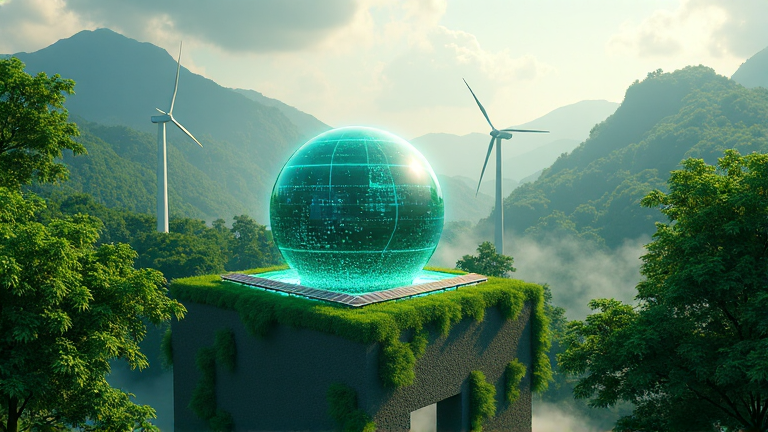
The Impact of DeepSeek's Revolutionary AI Development on Energy Consumption and Climate
The revelation by Chinese AI startup DeepSeek that it developed a highly efficient chatbot at a significantly reduced cost has stirred the global tech community, prompting profound questions about the sustainability of AI and its impact on the climate. DeepSeek's approach suggests a departure from the enormous energy consumption traditionally associated with artificial intelligence development, primarily driven by U.S. tech giants.
A New Dawn for AI Development?
DeepSeek's claim that their chatbot was developed with a budget of just $5.6 million contrasts sharply with the billions expended by leading U.S. companies like Meta and Microsoft on data centers. These data centers are known for their extensive electricity demand, contributing to climate change due to reliance on fossil fuels. In light of DeepSeek's innovation, there is hope that AI can become more energy-efficient, offering a potential reprieve for the environment.
"There has been a very gung-ho, go-ahead-at-all-costs mentality in this space," comments Eric Gimon, Senior Fellow at Energy Innovation. "This is an opportunity to tap the brakes." The reduction in energy needs could align with existing climate goals by curtailing fossil fuel consumption linked to AI training and deployment.
The Energy Challenge
Despite DeepSeek's groundbreaking achievement, U.S. tech companies have been on a trajectory of increased electricity use. In 2023, data centers accounted for 4.4% of all U.S electricity, with this number potentially rising to as much as 12% by 2028, according to Lawrence Berkeley National Laboratory projections. With tech giants like Microsoft and Meta announcing massive investments in data infrastructure, the energy demand of AI continues to grow.
Travis Miller from Morningstar Securities Research predicts that new technology efficiencies might temper this growth. "We think that the growth in electricity demand will end up at the lower end of most of the ranges out there," he states. Meanwhile, Vic Shao of DC Grid notes that data centers are inevitable, but they might operate more efficiently, allowing time to bolster renewable energy reliance.
The Path Forward for AI and Energy
With DeepSeek's innovations, there could be a transformative shift in how AI systems are both developed and utilized. If AI-driven tasks can be processed more directly on devices like smartphones, as suggested by experts such as Mediatek's Rahul Sandil, data centers may become less central, reducing their environmental footprint and providing an opportunity to adopt renewable energy at scale.
However, experts, including IDC analyst Rick Villars, suggest that AI's growing integration into daily life will still necessitate robust infrastructure. "We think this could boost and accelerate AI's integration into our lives... but the capacity is still required," Villars asserts. The DeepSeek breakthrough signals a possible evolution in how AI development will balance technological advancement with environmental stewardship.
The Future of AI in a Climate-Conscious World
The potential reduction in AI's electricity needs comes as a silver lining for companies seeking to mitigate their environmental impact. As KR Sridhar, founder and CEO of Bloom Energy, emphasizes, it's vital for the U.S. to lead in this endeavor by ensuring that AI advancements are supported by clean energy innovation. "We can continue to make it better," urges Sridhar, advocating for AI's evolution in alignment with climate goals.
In conclusion, DeepSeek's approach may offer a new blueprint for AI development, suggesting that substantial technological progress doesn't require an equally enormous environmental cost. If widely adopted, these innovations could redefine the energy dynamics of AI, contributing to a more sustainable approach for future developments.
Note: This publication was rewritten using AI. The content was based on the original source linked above.